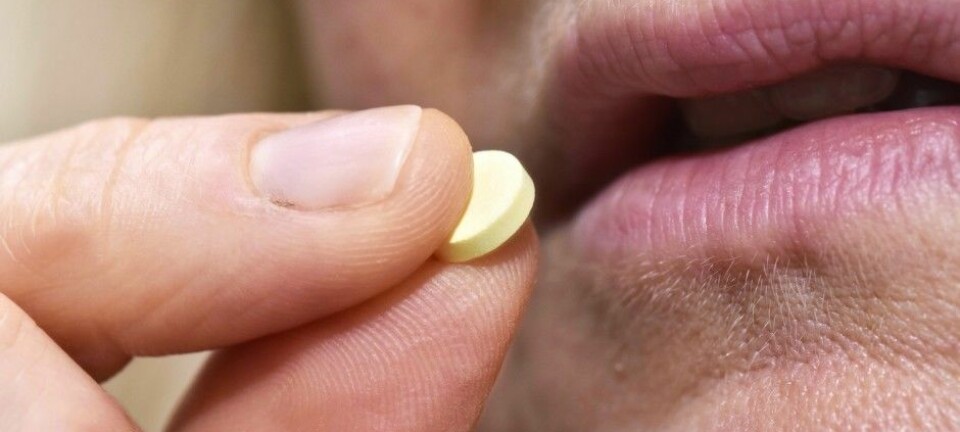
Found sedatives and illegal drugs in one out of 20 health care and transport workers
Researchers found traces of sleeping pills, Valium, morphine, cannabis and amphetamines in spit samples of over three percent of employees on the job. The highest percentages of these were workers in the restaurant trade, in the transport sector and the health services.
The researchers studied the use of substances and medications among over 2,000 employees in a number of trades. The point of departure was to assess the consequences and evaluate whether intoxication on drugs and alcohol impacts sick leaves and undermines productivity.
Norwegian researchers had never previously gathered saliva samples from the employees in all these participating firms. At the same time, employees answered anonymised questionnaires.
Such forms are not always a fully reliable tool for finding out people’s habits of drinking and using medications and drugs.
“Those who have substance abuse problems are less likely to participate in such studies than others. And many claim to use less than they really do,” explains Senior Researcher Hallvard Gjerde at Oslo University Hospital’s Norwegian Centre for Addiction Research.
The spit tests would thus give a more accurate picture of any drugs and alcohol that employees had used the previous day.
“It was essential that the employees were unaware beforehand about when we were going to take the samples,” says Gjerde.
Eight trades
The researchers invited the participation of a number of companies from the sectors of finance, transport, industry, restaurants, media, research and public administration as well as the health services. The latter supplied the most participants.
The employees were forewarned well ahead of time that a study would be implemented in the course of coming months. Only one contact person in each participating workplace or firm knew when the researchers were coming for such spot checks to take saliva samples.
The samples were delivered anonymously in sealed envelopes in a way that kept anyone from linking the results to individual employees.
The samples were collected on workdays in most of the trades. The one exception was the restaurant/bar business as they have the most staff on hand during weekends.
The spit samples were analysed for content of substances including alcohol, narcotics and medications such as sedatives or sleeping pills.
All in all, illegal drugs were found in 20 spit samples, sedatives in 67 samples and alcohol in just one. On the whole, with all types of jobs included, 3.8 percent of the saliva samples revealed such use of drugs and alcohol.
Illegal drugs in the restaurant trade
Fairly wide differences were found from one branch of work to another.
Those who worked in restaurants and bars were also the persons who most commonly used illegal drugs.
In the restaurant and bar trade, nine percent of the spit tests turned up with signs of illegal or prescription drugs. Seven percent of the employees in this trade had used illegal drugs and two percent used prescription-based sedatives and sleeping pills.
“The illegal drug was usually cannabis,” says Gjerde. But traces of amphetamines and cocaine were also found.
Soporifics among health care workers
Perhaps a more serious finding was that 4.6 percent of the health services personnel had traces of sedatives in their spit samples.
“Most of this was from the sleeping pills [soporiphics]such as Imovane and Stilnoct or sedatives such as Sobril and Valium. Some was also [the opiate-based pain-reliever] Paralgin Forte. Concentrations in the spit tests were generally low, such as could be expected after taking one sleeping pill when going to bed the previous evening,” explains Gjerde.
Illegal drugs and soporifics in transport
Five percent of the transport and warehouse workers tested positive for illegal substances or prescription sedatives.
“In a couple of cases we found a combination of Valium and amphetamine, and this could be a troublesome mix,” says Gjerde.
Another case showed a trace of morphine, the metabolised form of heroin.
In contrast, tests indicated the use of substances among just 2.8 percent of the spit tests of workers in industry and 1.5 percent of people employed in the financial sector. Most of these were from legal pharmaceutical products.
In the general batch of other trades just one percent tested positive. Amongst them, however, there was a large media enterprise that refused to subject their employees to taking spit tests.
Inefficiency and days away
Sedative use can make employees less on the ball. The researchers compared their findings from saliva analyses and the use that employees reported anonymously.
Only 0.8 percent of the participants admitted to having been inefficient at work because of the use of sedatives or sleeping pills.
A higher share of restaurant and bar staff reported that prescription-based drugs had impacted their work efficiency in the past year. Just 1.5 percent of those working in restaurants and 1.2 percent of those in bars admitted that prescription drugs had affected their work performance.
“Inefficiency on the job caused by sedatives is a more common occurrence among restaurant and bar employees and health workers,” write the researchers.
Absences caused by the use of such medications were the most frequent among transport and warehouse workers. This was made clear by the questionnaires. One of the questions was whether use of pharmaceutical drugs had led to sickness absences.
But absences caused by such medications were much less frequent than ones caused by hangovers and high intakes of alcohol.
Upwards of 25 percent of employees at bars and restaurants reported using illegal drugs in the past year. Nearly half that share, 11.5 percent, reported such use in the past 48 hours.
Proof of under-reporting
The researchers also compared the results of spit samples with the self-reported used of medications, drugs and alcohol.
Less than half of those who tested positive for use of illegal drugs admitted to using them the past two days. Among the restaurant and bar workers, such failure to report usage was lower than in the other branches of work.
It would seem that there is more acceptance for the use of substances in their line of work.
Among those whose spit tests revealed traces of sedatives, 61 percent admitted to taking such pills.
Impact on safety
Actis – the Norwegian Policy Network on Alcohol and Drugs – is an umbrella organisation working to reduce the use of drugs and alcohol amongst employees in a wide array of trades.
“Much of the traditional initiatives at places of work have been about alcohol. The new findings show that we need to also focus on other intoxicants as well as medications that impact work performance,” writes Mina Gerhardsen, the secretary general of Actis, which also tries to help employees with the gambling habit.
A truck, bus or taxi driver or a health worker under the influence can obviously be a hazard for traffic or for patients.
“As fellow drivers and vehicle occupants we want sober and alert truck drivers on our roads. The report shows that the transport sector should find the means to ensure that their drivers have not used prescription drugs that hamper their driving skills,” she says.
Actis would like to see alcohol locks on the ignition systems of all heavy road traffic. But Gerhardsen points out that it is also important for employers to follow up with preventive initiatives and systems that detect the use of intoxicants as early as possible.
Check routines
“Getting a grip on this is about care for employees as well as ensuring public safety.”
Gerhardsen thinks the findings should prompt workers and employers organisations in the most vulnerable trades to join together in evaluating whether they have sufficient routines for detecting the use of intoxicants.
Employees who have problems with substance use should be offered help.
The study was commissioned by the Ministry of Health and Care Services and carried out by researchers at the Norwegian Institute of Public Health. The section working on the project is under Oslo University Hospital.
-------------------------------------
Read the Norwegian version of this article at forskning.no
Translated by: Glenn Ostling
































